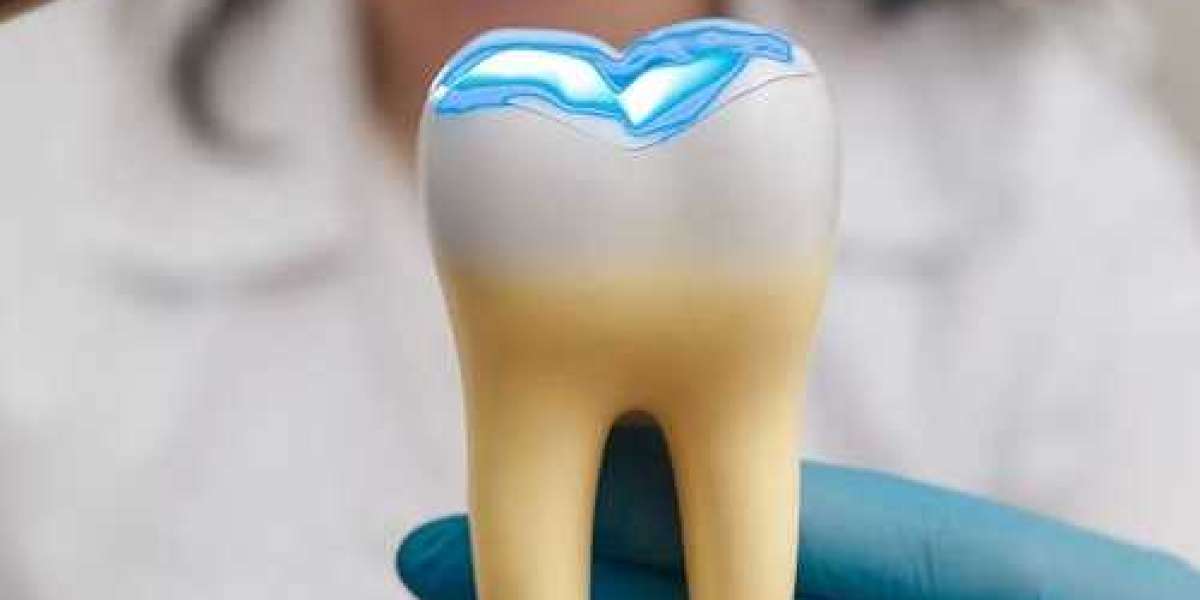Dental fillings are a common solution for treating cavities and restoring tooth structure. However, many people worry about whether getting a filling could eventually lead to the need for a root canal. Understanding the connection between dental fillings and root canals can help you take the right steps to protect your oral health.
Understanding Dental Fillings and Their Purpose
A Dental filling in Islamabad is a procedure used to repair minor to moderate tooth decay. When bacteria erode the tooth’s enamel, a cavity forms, which, if left untreated, can worsen over time. Fillings help restore the damaged tooth, preventing further decay and potential infections.
The process involves removing the decayed portion of the tooth and filling the space with a durable material such as composite resin, amalgam, or ceramic. This prevents bacteria from re-entering the area and preserves the tooth’s natural function.
When Does a Filling Lead to a Root Canal?
While fillings are designed to prevent further complications, certain situations can lead to the need for a root canal:
1. Deep Cavities Reaching the Pulp
If tooth decay progresses too deep, it can reach the pulp—the soft inner tissue containing nerves and blood vessels. In such cases, a filling alone may not be sufficient, and a root canal may be required to remove the infected pulp and save the tooth.
2. Recurrent Decay Under a Filling
Over time, fillings may wear down, crack, or loosen. This allows bacteria to seep into the tooth, causing further decay. If the new decay reaches the pulp, a root canal becomes necessary to prevent the infection from spreading.
3. Trauma or Cracks in the Tooth
A tooth that has undergone significant trauma or developed cracks may suffer internal damage. Even after a filling, stress on the tooth can cause further fractures, leading to pulp inflammation and requiring a root canal.
4. Poorly Done or Oversized Fillings
In some cases, if a filling is too large, it can put excessive pressure on the remaining tooth structure, leading to fractures or pulp irritation. This increases the likelihood of needing a root canal treatment.
Signs You May Need a Root Canal After a Filling
If you have had a filling but experience any of the following symptoms, you might need a root canal:
Persistent or severe tooth pain
Sensitivity to hot or cold that lingers
Swelling around the gums
A pimple-like bump on the gums near the treated tooth
Discoloration of the affected tooth
These symptoms indicate that the pulp inside the tooth is inflamed or infected, requiring root canal therapy to prevent further damage.
Preventing Root Canals After a Filling
While there is always a slight risk of needing a root canal after a filling, following good dental care practices can help minimize the chances:
Maintain Proper Oral Hygiene
Brushing twice a day, flossing regularly, and using fluoride toothpaste can prevent cavities and reduce the risk of deep decay that could lead to a root canal.
Regular Dental Check-Ups
Visiting your dentist for routine check-ups and cleanings helps detect any issues early. Your dentist can assess existing fillings and recommend necessary repairs or replacements before further complications arise.
Avoid Hard and Sticky Foods
Chewing on hard foods like ice, nuts, or hard candy can damage fillings and lead to cracks. Sticky foods can pull on fillings and create gaps for bacteria to enter, increasing the risk of decay.
Address Sensitivity Immediately
If you experience sensitivity after a filling, inform your dentist. Early intervention can help prevent a minor issue from becoming a severe infection requiring a root canal.
Cost Considerations: Fillings vs. Root Canals
The cost of dental treatments can vary based on the severity of the condition and the materials used. While fillings are a more affordable option, delaying treatment or ignoring signs of decay can lead to expensive root canal therapy. Understanding teeth filling costs in Islamabad can help you plan your treatment accordingly and avoid unexpected expenses.
Final Thoughts: Are Fillings a Risk Factor for Root Canals?
In most cases, fillings are a preventive measure that stops cavities from worsening and reduces the need for root canals. However, neglecting proper oral care, ignoring recurrent decay, or dealing with deep cavities can increase the likelihood of requiring a root canal later.
For the best dental care solutions, consulting a trusted clinic like Royal Cosmetic Surgery PK can help ensure high-quality treatments that preserve your oral health. Regular dental visits, proper hygiene, and timely interventions can keep your teeth healthy and reduce the need for more complex procedures.








